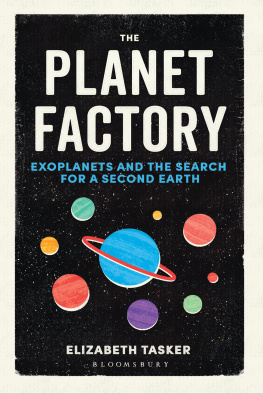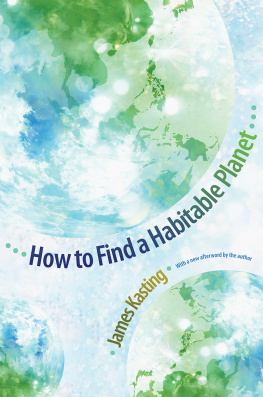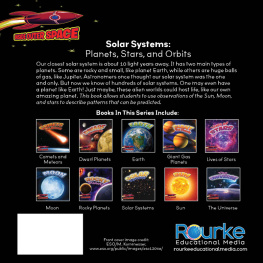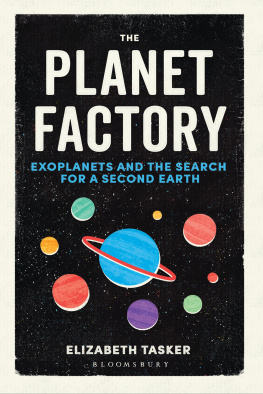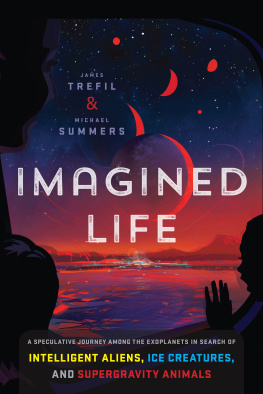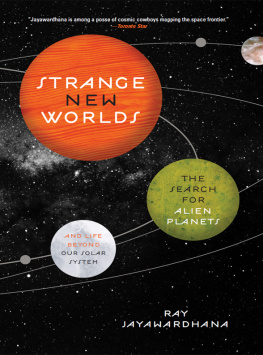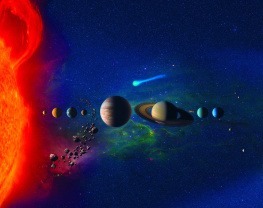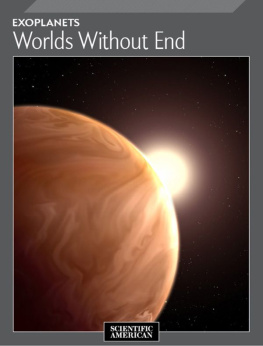Elizabeth Tasker - The Planet Factory: Exoplanets and the Search for a Second Earth
Here you can read online Elizabeth Tasker - The Planet Factory: Exoplanets and the Search for a Second Earth full text of the book (entire story) in english for free. Download pdf and epub, get meaning, cover and reviews about this ebook. year: 2017, publisher: Bloomsbury Sigma, genre: Children. Description of the work, (preface) as well as reviews are available. Best literature library LitArk.com created for fans of good reading and offers a wide selection of genres:
Romance novel
Science fiction
Adventure
Detective
Science
History
Home and family
Prose
Art
Politics
Computer
Non-fiction
Religion
Business
Children
Humor
Choose a favorite category and find really read worthwhile books. Enjoy immersion in the world of imagination, feel the emotions of the characters or learn something new for yourself, make an fascinating discovery.
- Book:The Planet Factory: Exoplanets and the Search for a Second Earth
- Author:
- Publisher:Bloomsbury Sigma
- Genre:
- Year:2017
- Rating:5 / 5
- Favourites:Add to favourites
- Your mark:
The Planet Factory: Exoplanets and the Search for a Second Earth: summary, description and annotation
We offer to read an annotation, description, summary or preface (depends on what the author of the book "The Planet Factory: Exoplanets and the Search for a Second Earth" wrote himself). If you haven't found the necessary information about the book — write in the comments, we will try to find it.
Twenty years ago, the search for planets--and life--outside the solar system was a job restricted to science fiction writers. It is now one of the most rapidly growing fields in astronomy, with thousands of these exoplanets discovered so far. The detection of these worlds has only been possible in the last decade, with the number of discoveries increasing enormously over the last year following the findings of the Kepler Space Telescope.
These new worlds are more alien than anything in fiction. Planets larger than Jupiter with years lasting one week, planets circling the dead remains of stars, others with two suns lighting their skies or with no sun at all. These locations hint at Earth-sized worlds but with split hemispheres of perpetual day and night, waterworlds drowning under global oceans, and volcanic lava planets spewing seas of magma.
The Planet Factory tells the story of exoplanets, planets orbiting stars outside of our solar system. Discover the specks of dust that circle a young star come together in a violent building project that can form colossal worlds hundreds of times the size of the Earth; the changing orbits of young planets that risk dooming the life forming on neighboring worlds or, alternatively, that can deliver the key ingredients needed to seed its beginnings. Exoplanets are one of the greatest construction schemes in the universe and they occur around nearly every star you see. Each result is an alien landscape, but is it possible that one of these could be like our own home? The Planet Factory discusses the way these planets form, their structure and features, and describes in detail the detection techniques used (there are many) before looking at what we can learn about the surface environments and planetary atmospheres, and whether this hints at the tantalizing possibility of life.
An informative and entertaining read, The Planet Factory takes the reader to the cutting edge of the ongoing search for worlds like our own, and the hints of life elsewhere in the cosmos.
Elizabeth Tasker: author's other books
Who wrote The Planet Factory: Exoplanets and the Search for a Second Earth? Find out the surname, the name of the author of the book and a list of all author's works by series.

